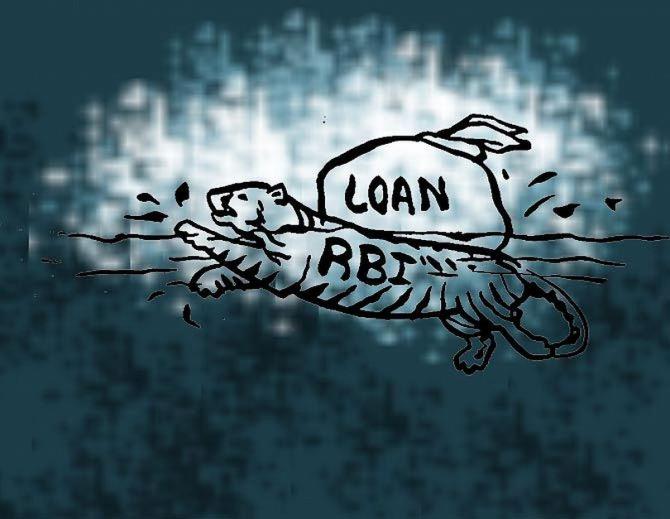In FY24, loans given out by such firms had topped a whopping Rs 146,517 crore, up by 49 per cent year-on-year and spread over 10.19 million accounts (up 35 per cent).

The Reserve Bank of India is monitoring loans with a ticket size of up to Rs 50,000 on the books of banks and fintech lenders.
A majority of consumers in this segment services three 'live' loans, and it is suspected this could be an indication of evergreening with the possibility of diversion into capital markets.
The scrutiny should be seen in the context of the RBI in November asking regulated entities (REs) to review their exposure limits for consumer credit and put in place board-approved limits for various sub-segments, specifically unsecured consumer credit exposures, by February 29, 2024.
While no sizing study has been done on this segment of loans, data from the Fintech Association for Consumer Empowerment shows runaway growth in such offerings given by new-age fintech lenders.
In FY24, loans given out by such firms had topped a whopping Rs 146,517 crore, up by 49 per cent year-on-year and spread over 10.19 million accounts (up 35 per cent).
Loans are now priced at 30 per cent levels per annum and tenures range between three, six and 24 months.
The overall portfolio-at-risk for 90-days past-due has improved since FY22; and in FY24 fell to 3.5 per cent from 3.6 per cent in September 2023.
In the case of fintech lenders, sources indicated that shorter tenures on consumer credit - ranging between three or four months to a year - are being looked into.
These are mostly given to below prime and new-to-credit borrowers with credit bureau scores ranging between 500 and 700.
RBI Governor Shaktikanta Das said supervisory teams had noticed that 'some entities have fixed very high ceilings, even where they already have a high exposure. While it is not our intention to be prescriptive on such matters, banks and NBFCs (non-banking financial companies) are expected to show prudence and avoid exuberance'.
There are now whispers that the central bank may ask REs to reduce the pace of growth of their unsecured book in case it feels some entities are not being prudent.
While the risk weights on banks' unsecured personal loans and consumer durable loans have been increased to 125 per cent from 100 per cent, and that on credit cards have been increased to 150 per cent from 125 per cent, banks and NBFCs can absorb the higher risk weights given their comfortable capital buffers.
It is surmised that the RBI may now consider risk weights based on the ticket size to address this last aspect.
Another concern is that a few REs, especially fintechs, plan to take up the delay and dated nature of credit bureau data with the central bank: It is well over 45 days.
It was pointed out that this was because data reported to the bureaus has to be verified and the attendant bureaucracy over it leads to delays.
The TransUnion CIBIL report of October 2023 has it that since January 2022 personal loans of less than Rs 50,000 made for a very small share of total retail balances (0.3 per cent of the total retail loan book at an industry level), but accounted for approximately 25 per cent of total origination volumes.
As a result, the proportion of credit-active consumers availing of small-ticket personal loans has increased to 8 per cent in June 2023, from 3 per cent in June 2019.
The Financial Stability Report of June 2024 had called attention to concerns in consumer credit.
First, delinquency levels among borrowers with NBFC-fintech lenders have the highest share in sanctioned and outstanding amounts, and the second highest delinquency levels.
Second, vintage delinquency, which is a measure of slippage, remains relatively high in personal loans at 8.2 per cent. Vintage delinquency is defined as the percentage of accounts that have anytime become delinquent within twelve months of origination.
Third, little more than a half of the borrowers in this segment have three live loans at the time of origination and more than one-third of the borrowers have availed of more than three loans in the last six months.
Fourth, 7.3 per cent of customers availing of a personal loan below Rs 50,000 had at least one overdue personal loan.
Feature Presentation: Ashish Narsale/Rediff.com












 © 2025
© 2025